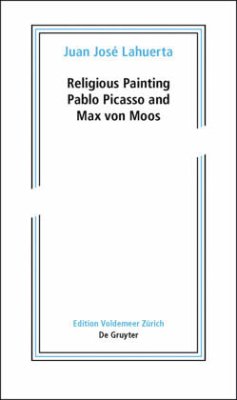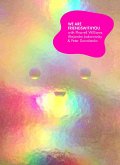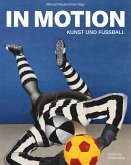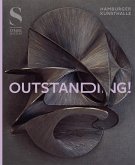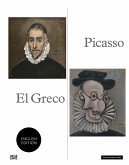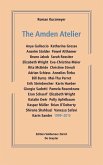Religious subject matter is not central in 20th century art. One might therefore suspect that, for the avantgarde, the Spanish Civil War (1936-1939) would have eclipsed religion altogether. However, as Juan José Lahuerta argues in this book, the war caused a considerable revival of certain themes of religious art. In particular, it intensified Pablo Picasso's lifelong preoccupation with the subject of the Crucifixion.
The work of the Swiss surrealist painter Max von Moos (1903-1979) throws additional light on the paradox at hand. In 1938, i.e. one year after Picasso painted "Guernica," von Moos published an essay entitled "Religious Painting of Our Time" that addresses some of the critical issues then confronted by church art: issues of communication and expression, realism and abstraction that turn out to offer surprising insights into Picasso's art - if not into modern art altogether.
Das religiöse Sujet steht nicht im Zentrum der Kunst des 20. Jahrhunderts. Man könnte deshalb vermuten, dass etwa der Spanische Bürgerkrieg (1936-1939) die Religion aus dem Bewusstsein der Avantgarde vollends getilgt hat. Juan José Lahuerta zeigt jedoch in seinem Buch, dass bestimmte Themen der religiösen Kunst durch diesen Krieg eine ganz neue Aktualität gewannen. Dies gilt insbesondere für Pablo Picasso, dessen lebenslange Beschäftigung mit dem Thema der Kreuzigung damals in eine neue intensive Phase trat.
Die Arbeit des Schweizer Surrealisten Max von Moos (1903-1979) wirft zusätzliches Licht auf das vorliegende Paradoxon. 1938, ein Jahr nach Picassos "Guernica", veröffentlichte von Moos einen Essay mit dem Titel "Religiöse Malerei unserer Zeit", in dem er einige kritischen Fragen zu kirchlicher Kunst aufwirft: Fragen zu Kommunikation und Ausdruck, Realismus und Abstraktion, welche überraschende Einsichten gewähren: nicht nur in Picassos Kunst, sondern zur modernen Kunst überhaupt.
Hinweis: Dieser Artikel kann nur an eine deutsche Lieferadresse ausgeliefert werden.
The work of the Swiss surrealist painter Max von Moos (1903-1979) throws additional light on the paradox at hand. In 1938, i.e. one year after Picasso painted "Guernica," von Moos published an essay entitled "Religious Painting of Our Time" that addresses some of the critical issues then confronted by church art: issues of communication and expression, realism and abstraction that turn out to offer surprising insights into Picasso's art - if not into modern art altogether.
Das religiöse Sujet steht nicht im Zentrum der Kunst des 20. Jahrhunderts. Man könnte deshalb vermuten, dass etwa der Spanische Bürgerkrieg (1936-1939) die Religion aus dem Bewusstsein der Avantgarde vollends getilgt hat. Juan José Lahuerta zeigt jedoch in seinem Buch, dass bestimmte Themen der religiösen Kunst durch diesen Krieg eine ganz neue Aktualität gewannen. Dies gilt insbesondere für Pablo Picasso, dessen lebenslange Beschäftigung mit dem Thema der Kreuzigung damals in eine neue intensive Phase trat.
Die Arbeit des Schweizer Surrealisten Max von Moos (1903-1979) wirft zusätzliches Licht auf das vorliegende Paradoxon. 1938, ein Jahr nach Picassos "Guernica", veröffentlichte von Moos einen Essay mit dem Titel "Religiöse Malerei unserer Zeit", in dem er einige kritischen Fragen zu kirchlicher Kunst aufwirft: Fragen zu Kommunikation und Ausdruck, Realismus und Abstraktion, welche überraschende Einsichten gewähren: nicht nur in Picassos Kunst, sondern zur modernen Kunst überhaupt.
Hinweis: Dieser Artikel kann nur an eine deutsche Lieferadresse ausgeliefert werden.

